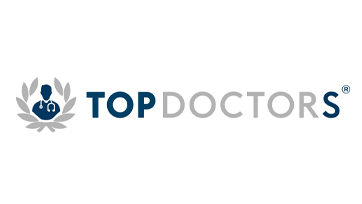
Current Healthcare Trends
We’ve said it before, and we’ll say it again: the healthcare system is constantly evolving. These changes are the results of many factors, both internal and external, and many of them currently are the direct result of the pandemic. Patients are more informed than ever; they want to be involved in their health journey and they’re now wired to desire efficiency in all aspects of life. Taking note of the latest healthcare trends and taking steps outside of your comfort zone to better your practice might just land you with more clientele and a better relationship with them too.
Patient consumerisation shift
81.5% of people have used the internet to search for general health related information, meaning that patients often come to consultations pre-informed. They search their symptoms, create a self-diagnosis, and put that diagnosis in a small box. Once this diagnosis is established, patients don’t think outside of that box, and they expect their doctor to diagnose them within that small box’s realm, regardless of its validity. This can lead to problems due to the amount of unreliable information shared on the internet and the fact that doctors do indeed think outside of boxes. Instead of attempting to fight the giant that the internet is, or trying to stop people from researching their conditions, we might as well work alongside the internet to create a seamless system.
Patients have an ‘Amazon state of mind’. They assert influence and control by clicking and receiving goods in a matter of hours, and they expect the same level of efficiency and transparency to be replicated by their healthcare providers. To adapt, we need to shift our focus from viewing the entire market as a whole, to seeing the market as individual patients. Each of them requiring different levels of attention, knowledge, and organisation to create an overall sense of convenience in their medical and wellness care.
By introducing patient centric technologies that keep patients involved minute-by-minute such as platforms to share test results, appointment times, and that contain safe communication systems, you will improve turnaround speed, transparency of care, and communication. Most importantly you will create the personalisation of care that patients who live in this ‘click-and-receive’ era desire.
Technology: AI and automation
To implement any of the platforms discussed above, there must be an adoption of digital technology. With the shared goal of improving efficiency, value, and innovation, 80% of health systems are expected to increase investments in digital health over the next five years. These new systems will reduce the number of redundant tasks your staff do daily, so that they can be used for what they do best.
Not only do AI (Artificial Intelligence) and automation assist in highlighting staff assets, but they also give your practice better data to improve quality of care and security. Together, these systems can streamline big data and health system operations to help doctors to be more expansive in their treatments and surgical procedures. To do this, they identify data patterns, predict risks and enhance your practices workflow process overall by having real time analytics to expedite each case.
In the coming years, we can also expect to see an increase in popularity and consolidation between doctors and patients on the Internet of Medical Things (IoMT), which has been seeing increased connectivity between hardware devices and medical software. With this, also comes the use of remote patient monitoring (RPM), virtual reality (VR) and augmented reality (AR) which we will start to see being implemented by the medical industry.
Artificial intelligence in healthcare
e-Consultation boom
Covid-19 has changed the way healthcare is delivered and has rapidly affected virtual care adoption and usage. When the pandemic was starting to develop there was limited usage of e-Consultation sessions for secondary care. We quickly saw an increase in usage of 90 times from what we had before the pandemic. In just three months of lockdown, we had the same number of e-Consultation sessions as we had previously seen in 3 years. This ‘phygital’ form of consultation, a combination of physical and digital sessions, continues to gain consistent traction as time goes on.
It is a natural progression, so there are steps you might want to consider in order to adjust your practice to offer telehealth, one of which is to create a reputable online presence.
Since the pandemic, 90% of patients search the internet for their healthcare specialists. With the changing needs of the market, being able to align your in-person strategy to your virtual strategy will help you to grow your practice. It’s great if you have a stellar reputation offline, but if you are unable to match and display those same skills and credibility online, then people won’t be able to find you. Establishing this is your ticket to showcasing your talents to the rest of the world.
Strategic supply chain model
Just like the toilet paper shortage, private practices and hospitals alike have faced major supply chain issues within the past few years. In fact, as of October 2021, 99% of health systems overall reported challenges in supply procurement. We now know that to survive health crises, we need to create new supply chain models to continue our ability to deliver hospital level care in a safe, cost effective, and high-quality way.
Depending on your own supplies and capabilities is no longer possible. Focusing on building relationships and collaborating with other clinics and distributers will open doors for more outsourcing. The idea here is to create more plans if one falls through. Successful supply chains that sail ahead of competition all have a plan B and C, they include more self-distribution (buying in bulk) rather than just-in-time distribution, and they place an emphasis on increasing storage and keeping an accurate inventory through digitalisation.
By 2040, the majority of care will be delivered at home or virtually, so creating a plan for what you can do to be ahead of the curve is key. With this change, you should still be able to offer your patients what they desire and need. Think about how you can adapt in terms of obtaining sufficient and quality supplies, but also in terms of creating innovative ways to be able to get these things delivered to and from patients if need be.
By doing these things today, you will not only feel more organised at any given moment, but you will also be prepared if we are ever faced with supply chain issues (which is guaranteed to happen at some point).
All of these new adoptions will have a significant impact on patient treatment as well as their access to healthcare. We have entered a new phase of healthcare where geography will continue to matter less with the implementation of technology. Although this is an exciting point in time to be a part of, it is also a winding road to figure out. By taking the steps to increase your visibility and your efficiency, you will ensure your practice will end up on top at the end.

About this Partner
TopDoctors® is a globally recognised online platform to find and contact the best private medical specialists, audited and certified by the most rigorous selection of doctors in the world. Our company was founded to meet a clear patient demand: finding the leading specialist to go to when confronted with a health issue.
